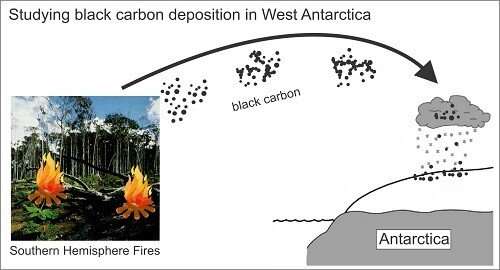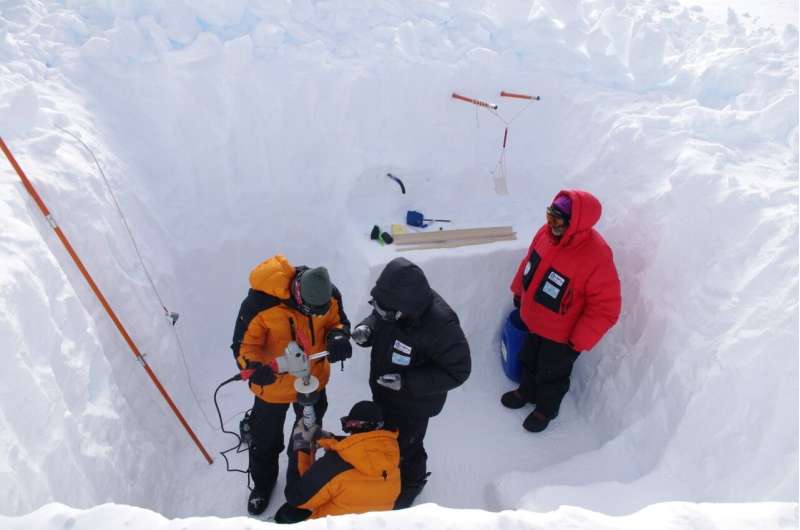Tracking Southern Hemisphere black carbon to Antarctic snow

Black carbon (BC) measurements in Antarctica are still scarce, but necessary to understand the particle's effect in our climate, says Luciano Marquetto, a Ph.D. student from the Polar and Climatic Center, Federal University of Rio Grande do Sul, Brazil.
"Black carbon, or BC, commonly known as soot, is a particle originated from the incomplete combustion of fossil fuels and biomass burning that warms the atmosphere. When deposited in snow and ice, BC increases surface radiation absorption and can cause melt," explains Mr. Marquetto. "Some scientists say that BC is second only to CO2 in its warming effects on the climate, and studies have shown that BC concentrations have risen since the industrial revolution in several places in the world, including Greenland, the Himalayas, the Alps and even Antarctica."
But studying BC in Antarctica is logistically challenging, and only in the last decade the topic has gained more attention. "Antarctica is a vast continent, and there are regions with no BC data yet. As climatic and atmospheric models rely on field data, studying BC concentrations in Antarctic snow is essential to improve these models," adds Mr. Marquetto.
Mr. Marquetto was part of a team of Brazilian researchers led by Dr. Jefferson Cardia Simões (Polar and Climatic Center) who carried out a traverse in West Antarctica in the 2014/2015 austral summer. They travelled more than 1400 km, collecting several shallow snow cores and samples along the way to investigate the snow chemistry (and consequently the atmospheric chemistry) in the last 50 years or so. One of these shallow cores was analyzed for BC in cooperation with Dr. Susan Kaspari (Central Washington University, U.S.).

"We observed very low BC concentrations in snow, lower than in other data from the continent. Due to that, in the article published in Advances in Atmospheric Sciences we decided to focus on instrumental and methodological questions raised during the research that needed to be answered before going deeper into the environmental interpretation," Mr. Marquetto says.
"However, our ultimate goal is to better understand BC seasonal variability and overall concentrations to see what impact the particle has in Antarctic snow, as well as try to identify BC geographical sources. We are also interested in the BC size distribution in snow, as particle size affects the amount of solar radiation BC can absorb. Impacts in the atmosphere and in the cryosphere are possibly being under or overestimated due to simplified representations of BC particle size in climatic models," believes Mr. Marquetto.
"As for sectorial sources, we know biomass burning represents around 80% of all BC emitted to the atmosphere in the Southern Hemisphere, which means that the fires happening in Australia, New Zealand and South America ultimately leave a mark in Antarctic snow."
More information: Luciano Marquetto et al, Refractory Black Carbon Results and a Method Comparison between Solid-state Cutting and Continuous Melting Sampling of a West Antarctic Snow and Firn Core, Advances in Atmospheric Sciences (2020). DOI: 10.1007/s00376-019-9124-8
Provided by Chinese Academy of Sciences



















